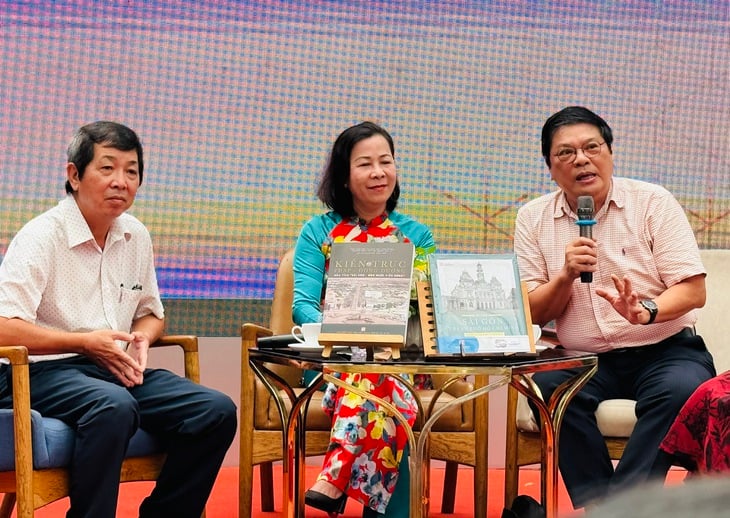
From left to right: journalist Nguyen Hanh, Associate Professor, Dr. Tran Thi Mai and journalist Tran Huu Phuc Tien share with readers - Photo: HO LAM
On the morning of May 17, at Ho Chi Minh City Book Street, the exchange session on Saigon - Ho Chi Minh City Heritage, the urban soul took place with Deputy Editor-in-Chief of Xua va Nay Newspaper Nguyen Hanh, researcher Tran Huu Phuc Tien and Associate Professor, Dr. Tran Thi Mai.
Participants had the opportunity to listen, discuss and look back at a part of the urban memory, where there are heritage values, from architecture, culture to people that make up the soul of Saigon.
Saigon, the pearl of the farthest East
Mr. Tran Huu Phuc Tien, author of the book French-Indochinese Architecture, Traces of Saigon - Pearl of the Far East, said that through studying the planning and typical architecture in Saigon before 1945, he saw that today we are inheriting a great legacy built from the blood, sweat and intelligence of many generations of ancestors.
According to Mr. Phuc Tien's research, La Perle de l'Extrême - Orient, the pearl of the farthest East, is the charming name the French used for Saigon more than 100 years ago.
That French name is affectionately Vietnamized as the Pearl of the Far East.
Associate Professor Dr. Tran Thi Mai said that the French called Saigon by the beautiful name of the Pearl of the Far East and were determined to build this place into a "miniature Paris" because they saw Saigon as a truly prosperous urban area with diverse river landscapes.
Mr. Phuc Tien shared: "In reality, the beauty of the Pearl of the Far East is not only the scenery and streets but also the whole from architecture to economy , culture and people. In particular, in terms of architecture, there are many mansions, houses, markets and many other works, showing diverse, beautiful and unique styles.
There were times when some Western writers compared Saigon to the Paris of Orient, where the French, locals and tourists could find some of the atmosphere and appearance of a "miniature Paris" or "tropical Paris" with many similarities in planning and architecture.
The time to create Saigon culture could be thousands of years.
According to Ms. Tran Thi Mai, in terms of administration, Saigon has been established for more than 300 years since Lord Nguyen Phuc Chu established Gia Dinh Palace in 1698. But if we talk about the time of formation of Saigon culture, it must be much longer, up to thousands of years.
"Because Saigon is located in the Dong Nai and Gia Dinh regions of the South, it has a long cultural history, starting with the Dong Nai culture, and then on that foundation, the Oc Eo and Phu Nam cultures developed brilliantly.
Around the end of the 16th century, Vietnamese residents began to come here, becoming the new owners of the land and bringing with them Vietnamese cultural heritage and traditions.
Then in the second half of the 17th century, Saigon received new communities, typically the Chinese. The old and new people kept coming and accepting each other, creating a culture with depth, diversity and rich identity," said Ms. Mai.
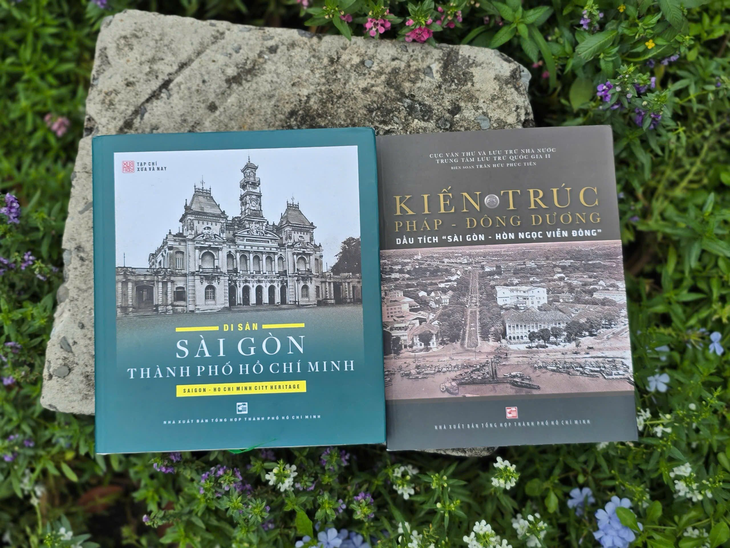
Book Saigon - Ho Chi Minh City Heritage and French - Indochina Architecture, vestiges of Saigon - Pearl of the Far East
To contribute to the shining light on the past heritage and cultural values of Saigon, journalist Nguyen Hanh and his colleagues selected 300 photos from 2000 to create the photo book Saigon - Ho Chi Minh City Heritage . Reading the book, readers will have a more comprehensive view of the history, culture and society of this land.
Not only stopping at architectural works such as administrative buildings, mansions, schools, hospitals, hotels, roads, ports, wharves, markets, etc., the book also recreates customs in ancient urban life such as: traditional weddings, funerals, hát bội (traditional opera), traditional music, folk games, horse racing, shops and interesting street food.
Summarizing the differences between Saigon and other cities across the country, Ms. Tran Thi Mai said that the following three important points can be seen:
"Saigon is a river city, with a developed network of rivers and canals, creating a very unique "life on the wharf and under the boat", contributing to the development of the land into a major economic and cultural center.
Furthermore, the diversity and richness of the residential community, with many groups of people from different ethnicities, religions and cultures, has created a diverse and unique culture. Finally, Saigon is a land with an extremely rapid urbanization rate."
Source: https://tuoitre.vn/sai-gon-tung-la-paris-thu-nho-trong-mat-nguoi-phap-20250517115715901.htm


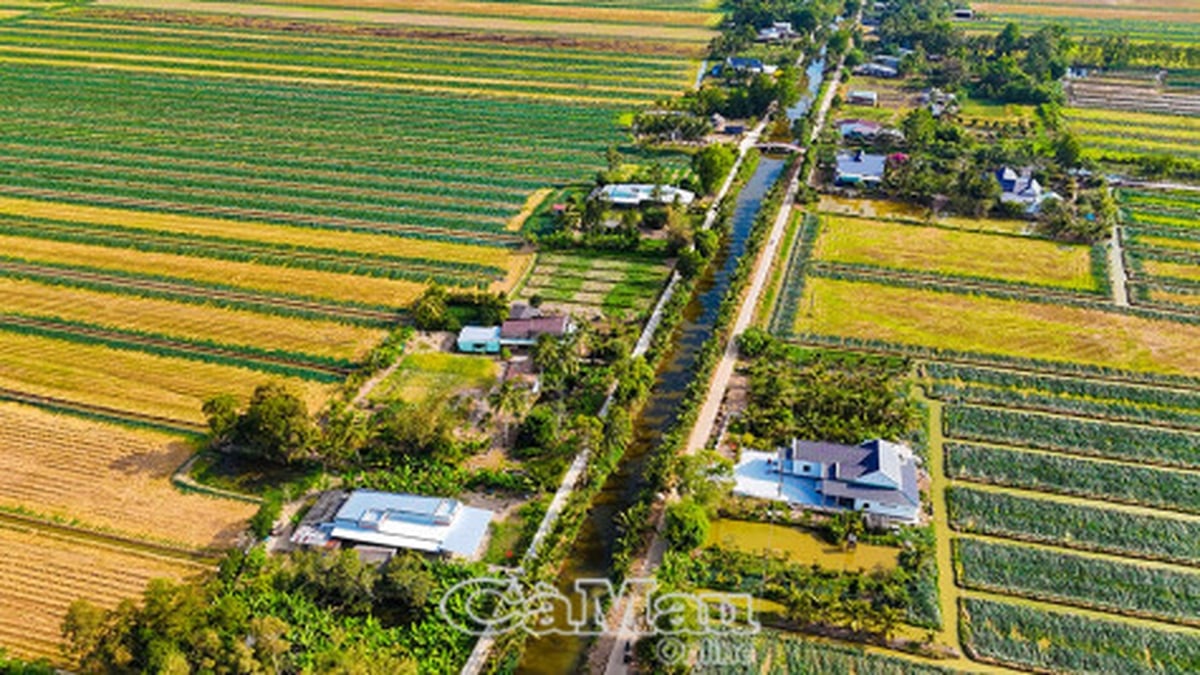



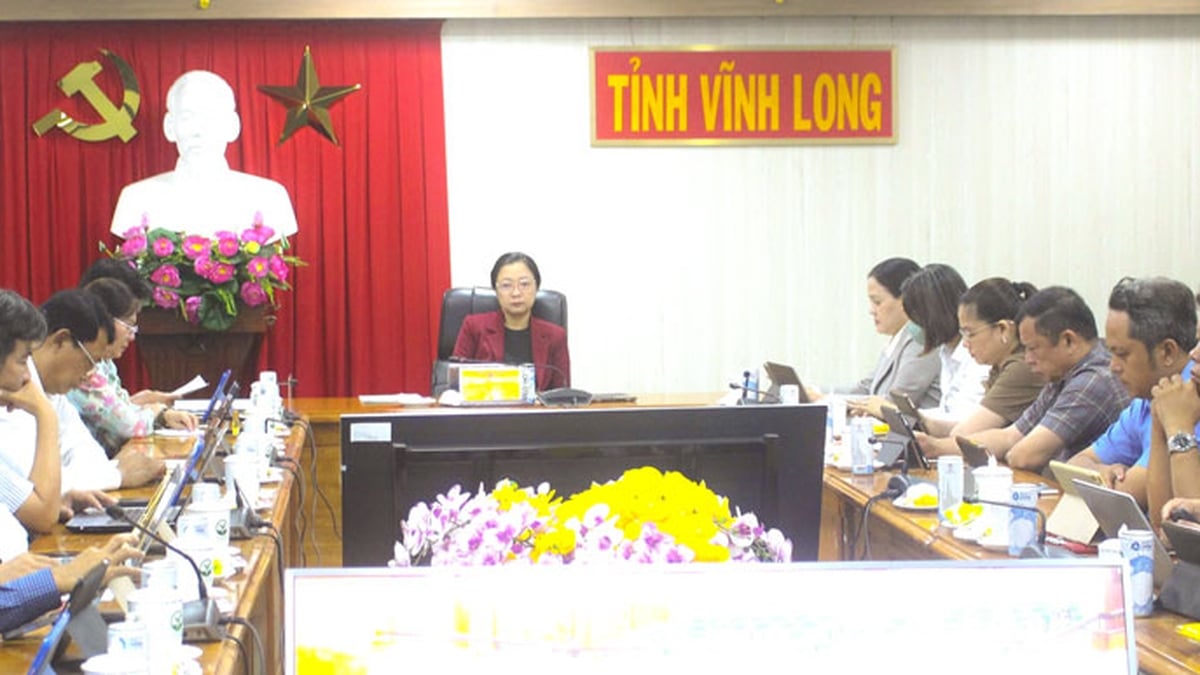



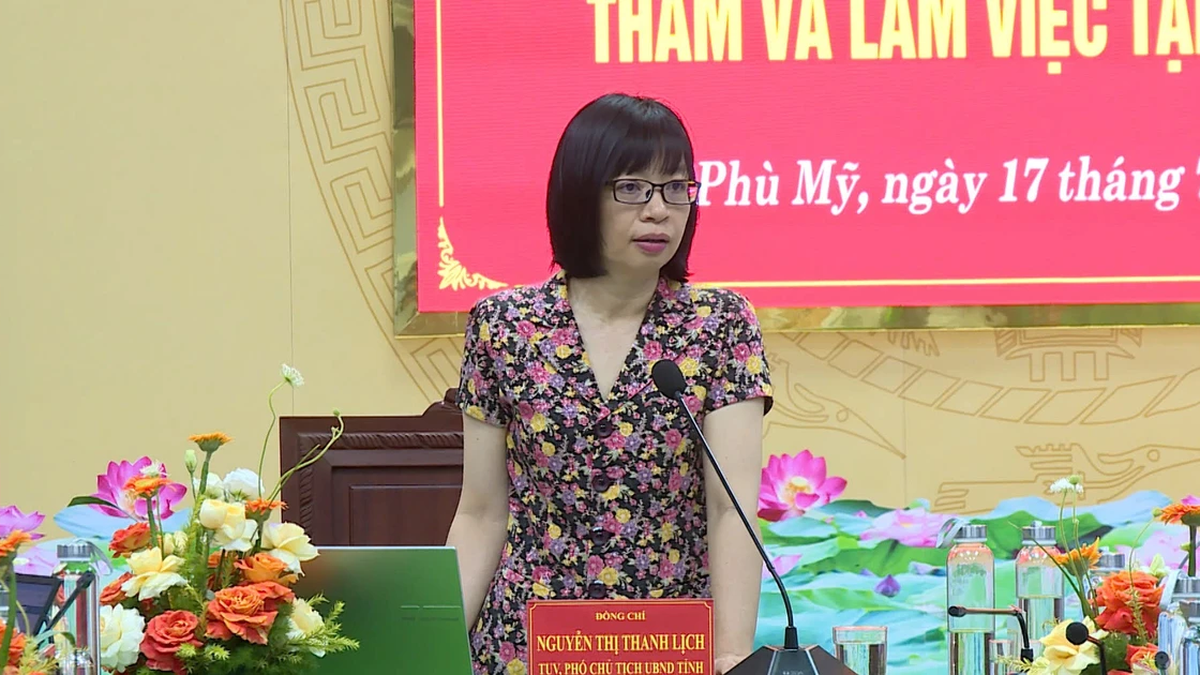









































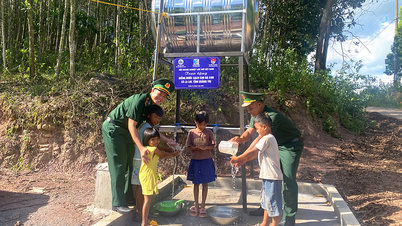








![[Maritime News] More than 80% of global container shipping capacity is in the hands of MSC and major shipping alliances](https://vphoto.vietnam.vn/thumb/402x226/vietnam/resource/IMAGE/2025/7/16/6b4d586c984b4cbf8c5680352b9eaeb0)






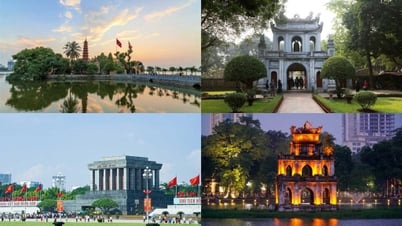



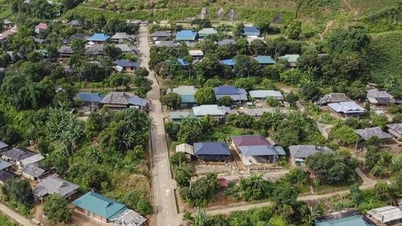

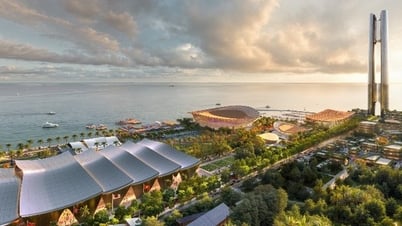
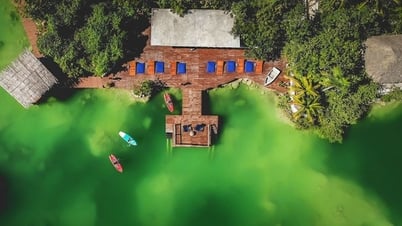
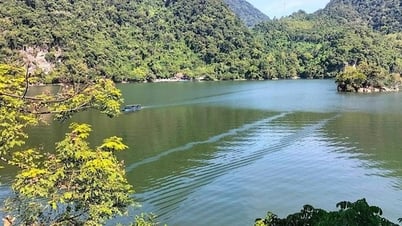



















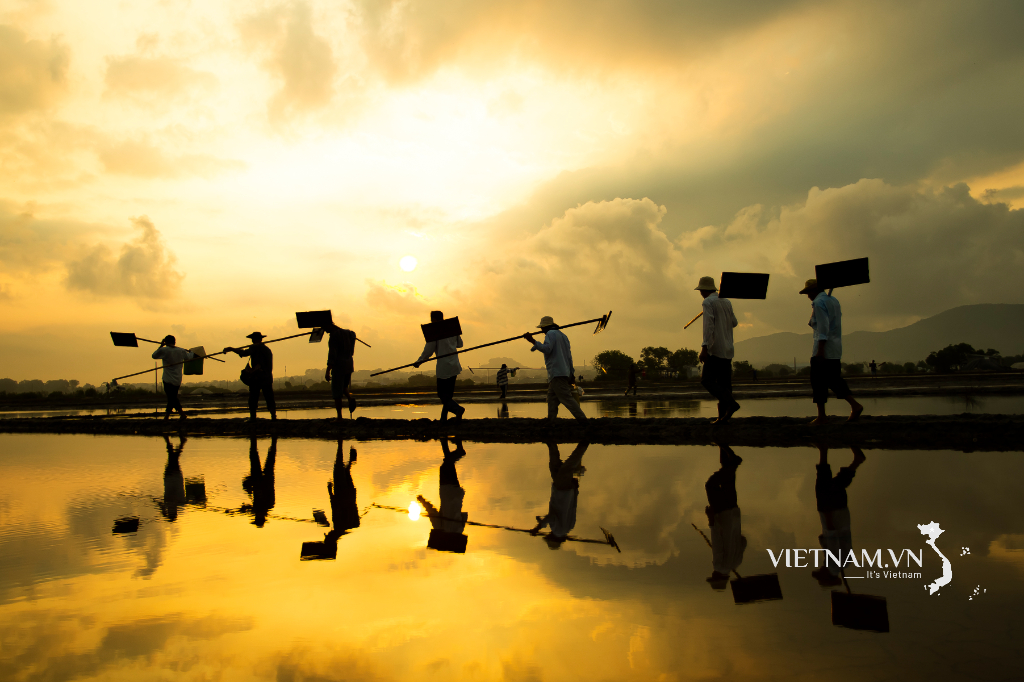
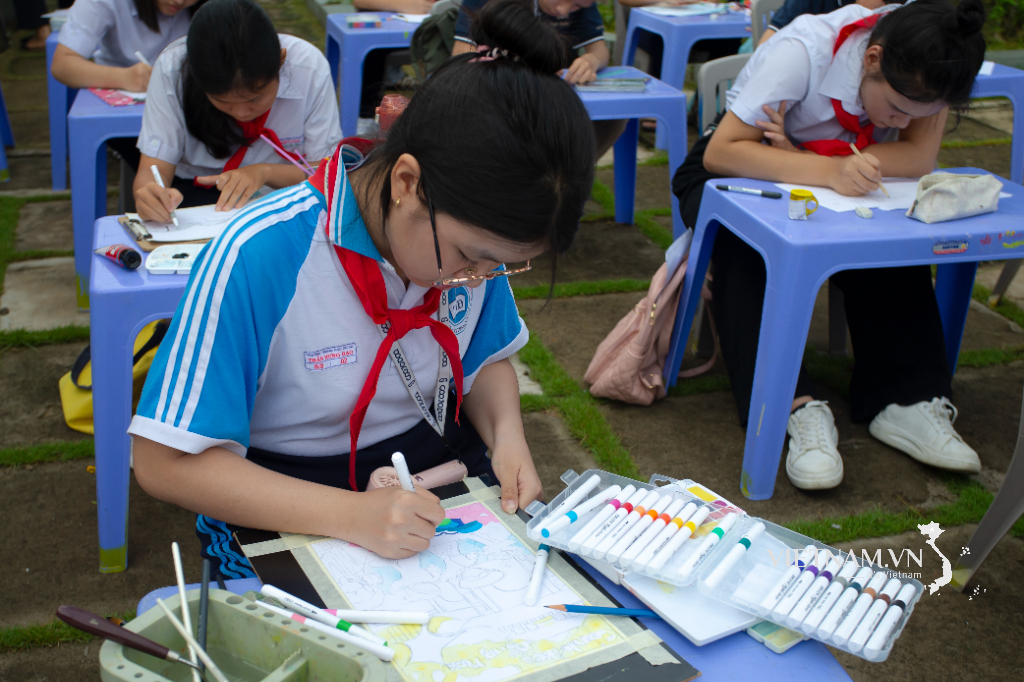


Comment (0)